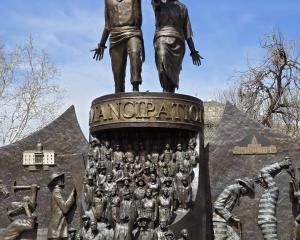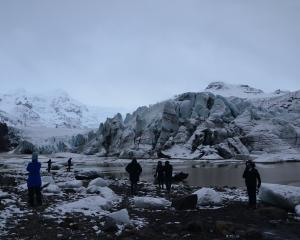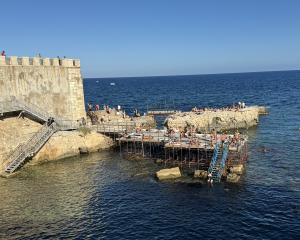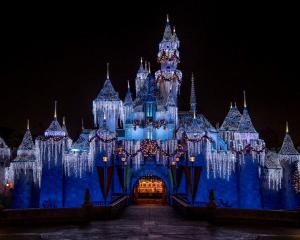Fergus Blakiston travels backwards into the dim reaches of time ...
North of Burra, the Barrier Highway unfolds across a landscape parched by drought. The harvest-bare fields lie grey beneath the South Australian sky. Dusty merino sheep cluster around hay feeders, and mooch along the fence-lines. A lone tractor drags a cloud of dust along a dirt side road. Steel windmills - the icons of the outback - spin languidly in the hot wind. Grain silos stand in the corners of the fields like crash-landed spacecraft.
I pass the abandoned farmhouse immortalised on the cover of the Midnight Oil album Diesel and Dust. Its sightless eyes stare out at the beige ground; its tin roof is red with decay and rust. To the north I can see the Flinders Ranges, floating in the mauve haze of late afternoon.
The Flinders Ranges unfold into the centre of South Australia in a series of broken, canted ridges. Some of the oldest rocks on Earth are found among the folds and synclines of the Flinders Ranges. From a distance, the ranges protrude like the curved backbone and ribs of some immense fossilised animal.
Wilpena Pound, on the southwestern flank of the Flinders Ranges, is an amphitheatre of ancient rock formed into the shape of a pair of cupped hands.
The Dreamtime story of the local Adnyamathanha Aboriginal people tells how a pair of serpents encircled and killed a group of people camped at a billabong (waterhole).
The serpents' bodies were turned to stone, creating the outline of Wilpena Pound, which today is part of the Ikara-Flinders Ranges National Park.
Night in Wilpena Pound is silent. Lying awake in my luxury "glamping'' tent at the Ikara Safari Camp, I look up at a sky encrusted with stars.
The beacon of the Southern Cross turns slowly overhead. The light from some of the stars I can see has taken millions of years to reach me.
And in a strange, convergent way, the ancient rocks of the Flinders Ranges may have been forming as that starlight began its long journey across time.
When I was a child, I was fascinated by a book in my parents' bookcase called Time in the Flinders Ranges.
The book was illustrated with grainy monochrome and orangey Ektachrome images of twisted rocky ranges, gnarled eucalypts, strange marsupials and red-dirt roads. The text described the experiences of someone who had spent some time travelling in the Flinders Ranges.
But to me, the title of the book had a different meaning. It implied that the concept of time in the Flinders Ranges was somehow different to the rest of the world: that it ran more slowly. The places depicted in the photographs seemed frozen in a state of suspended animation, like insects caught in amber.
Next morning, a powder-white road leads me deeper into the ranges. It undulates over a series of steep ridges then descends into the ravines of Brachina Gorge.
As I drive, it feels as though I am travelling backwards into the dim reaches of deep time. The 25km Brachina Gorge Geological Trail traces a lineal path through the geological story told by the gorge's folded, fractured strata.
I spend the morning dawdling along the trail, stopping at successive places in the rock record.
I climb a fossilised reef, 530 million years old; walk along a 590-million-year-old beach of petrified quartzite sand; see 630-million-year-old traces of stromatolites, whose ancestors oxygenated Earth's atmosphere; and sit on a bed of carbonate rock laid down at the beginning of the Ediacaran period, 635 million years ago, when Earth emerged from the world-enveloping ice age known as the Cryogenian, and complex life began its long evolutionary journey.
As a complex organism I need to eat, so I stop for lunch at the North Blinman Pub: "the highest pub in South Australia''.
Established as a mining town in the 1860s, Blinman today relies on tourism for its wealth. I sit outside on the veranda drinking ice-cold West End Draught and eating a steak sandwich, the staple dish of outback pubs.
Back in my vehicle, I descend into the confines of Parachilna Gorge. I camp beside a tiny billabong surrounded by gnarled river red gums. An ephemeral creek trickles from the waterhole over a lip of pale green limestone formed in some vanished ocean half a billion years ago.
As afternoon draws into evening, I climb to the summit of a low ridge and sit watching the day end.
The warm stone radiates the heat of the day. A currawong warbles in the trees below; magpie larks "chic-chic-chic'' down by the creek.
I imagine that this scene a hundred years ago, or a thousand, or a million years ago, would have looked almost exactly the same. I can feel the endlessness of time out here. In New Zealand, the forces of wind, water, ice and tectonics can shatter and change the landscape in days. In the Flinders Ranges, change takes place one sand grain at a time.
A lone car drags a trail of dust along the valley floor and disappears into the darkening hills. A big full moon, the colour of chardonnay, hangs in the lavender sky.
Westward, the sun has long since disappeared behind the rim of the ranges. I should return to my camp while there is still a little light left.
But there is no hurry. The rock I am sitting on has been here for half a billion years.
My presence is only an instant of time in the Flinders Ranges.
Fergus Blakiston travelled to South Australia with assistance from the South Australian Tourism Commission.
Checklist
• Air New Zealand flies nonstop 4-7 times per week between Auckland and Adelaide. Visit airnewzealand.co.nz for more information.
• For information on Adelaide and South Australia visit www.southaustralia.co.nz
• For more information on Maui Winery Havens or to book your own self-drive adventure, visit www.maui.com.au/winery-havens












